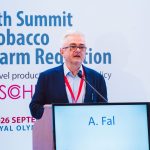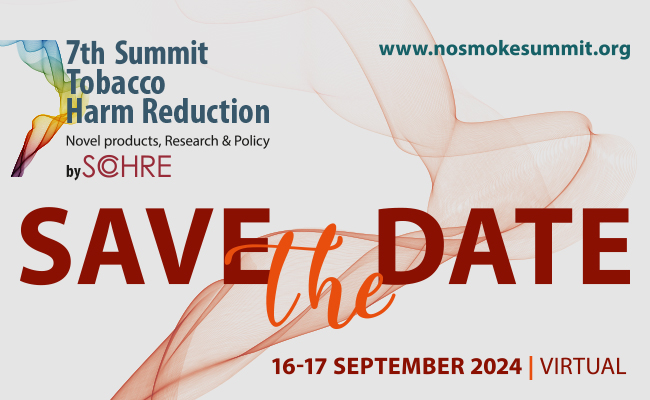Some 250 million people at any given time are trying to quit smoking cigarettes. To support them should be the major concern of the upcoming COP10 (WHO’s Conference of the Parties, 10th session). Unfortunately, this does not seem to be the case. The only major drop in cigarette smoking has been observed in countries with a “pragmatic” approach, namely Sweden, New Zealand, UK, and USA.
In his keynote speech “On our way to a smoke free world – a common point of view of public health and economy”, Professor Andrzej Fal referred to public health and the economics of chronic diseases, and more specifically to the correlation between life expectancy and income. Income and health expenditure seem to have a proportional relation with life expectancy; this relation is historically influenced by factors like wars and plagues, but nowadays it is increasingly influenced by NCDs (non-communicable diseases). These are chronic diseases, which are on a rise due to the increasing life expectancy and aging of the population. Chronic diseases are currently also called lifestyle diseases, because they depend on lifestyle risk factors, including behavioral risk factors, mainly alcohol drinking and cigarette smoking. As a result, as life expectancy increases, we have to increasingly spend on healthcare: in high income countries health expenditure reaches 10% of the GDP; at a global level, on the other hand, health expenditure is almost equal to education and military expenditure combined ($11.7 billion versus $11.2 billion). Therefore, Prof. Fal noted, we need to find other solutions, because we cannot afford to spend more on health care.
According to global statistics, 30-40% of cardiovascular diseases, around 80% of lung/bronchial cancers and 63% of COPD can be attributed to cigarette smoking; approximately 50% of direct and indirect healthcare costs are attributable to cigarette smoking. However, cigarettes represent a big part of a country’s income through excise duties and VAT taxes, and it seems that this raises a conflict of interests.
Professor Fal then presented the successful example of New Zealand, where both a policy of educational campaign and a policy of banning and of fiscal mechanisms for public health have been implemented. More specifically, the government of New Zealand developed a roadmap for increasing taxes; there have been 10 annual 10% tax increases, and they worked as a stress stimulus helping to quit those who intended to quit. As a result, between 1983 and 2020, smoking prevalence dropped from 32% to 13% in adults 15+ years old and from 28% to 5% in year 10 students.
The speaker then presented some recommendations made in Poland for four levels of prevention against cigarette smoking:
- primordial (basic) prevention: launch of at least one prevention clinic in each county (among 300 counties), led by a specialist specially trained, available without referral, and responsible for regional health prevention programmes (including schools) and smoking cessation information campaigns.
- primary prevention: introduce licensing of the sale of nicotine products (regulate the market by sensibly reducing availability and by banning the exposure of products at the sales point, as well as radically, but progressively, increase excise duties of cigarettes)
- secondary prevention: launch at least one prevention clinic in each county, available without referral, and with full access to anti-smoking therapy, nicotine replacement pharmacotherapy and harm reduction products.
- tertiary prevention: a) revise legislation, so that all products associated with smoking and nicotine are subject to the same restrictions on sale and marketing and b) in the group thus defined, structure the excise duty according to the “less harm less tax” message.
Prof. Fal also proposed that, since most of the products existing or entering the market as cigarette replacement products do not come with a structured portfolio of studies of efficacy, safety or harm reduction, a special group of medical, economic and public health experts should be established to review the existing state of knowledge. He added that publicly funded and supervised studies should be carried out, assessing the efficacy, safety and harm reduction, if the above-mentioned expert group finds the existing evidence to be insufficient.
Finally, Prof. Fal also referred to the successful example of Sweden, which in 2023 was proclaimed an almost smoke-free country, with a smoking prevalence of only 5.6% (5.0% is the threshold defined by the WHO), and with cancer rates 41% lower than in the rest of Europe.
In conclusion, at an era when health expenditures keep growing, prevention―through lifestyle changes, reduction of behavioural risk factors and harm reduction―is the most effective way of investing in future health. To stop the smoking pandemic and its financial and health effects, we need to raise funding for primordial prevention, as well as introduce a “less harm, less tax” regulation.



